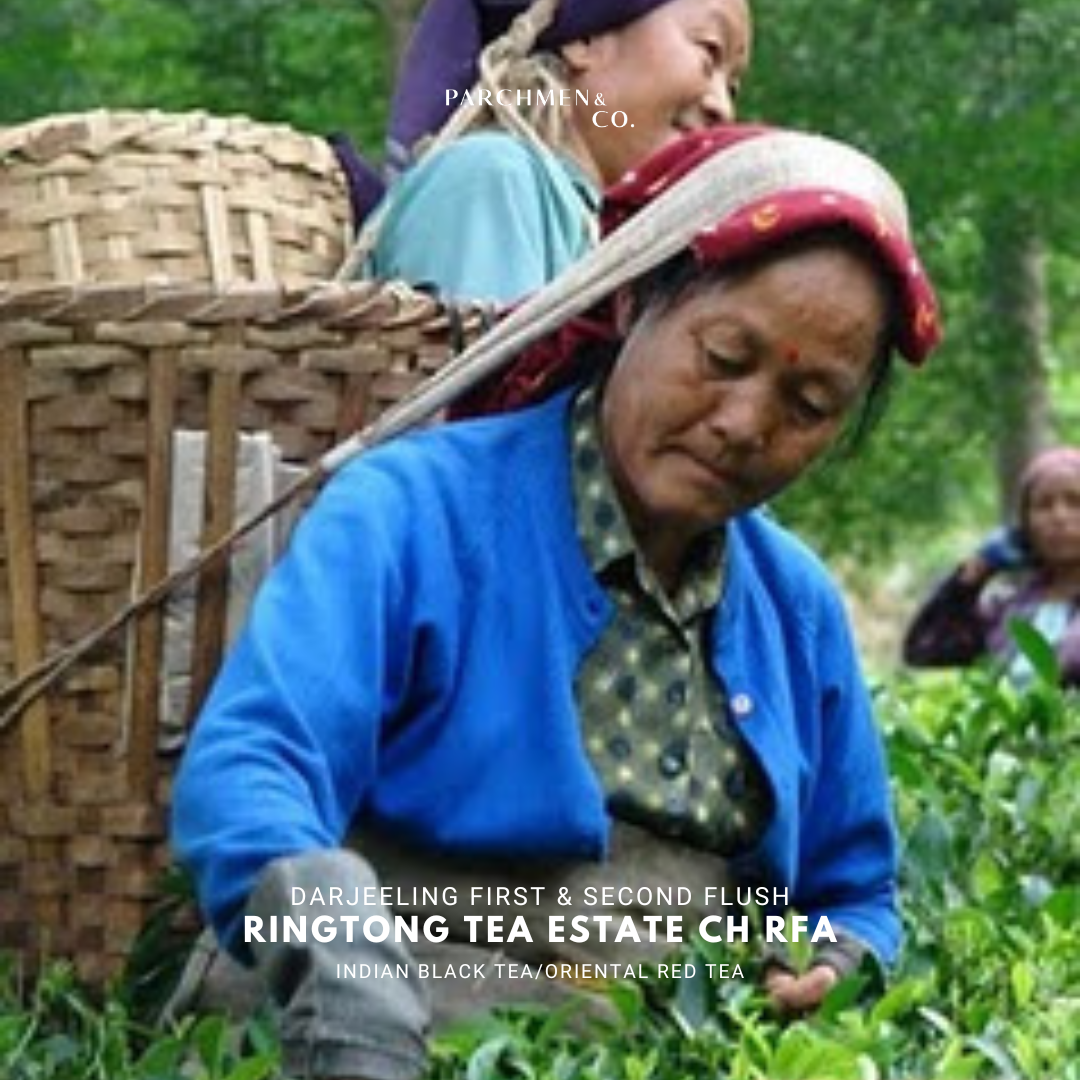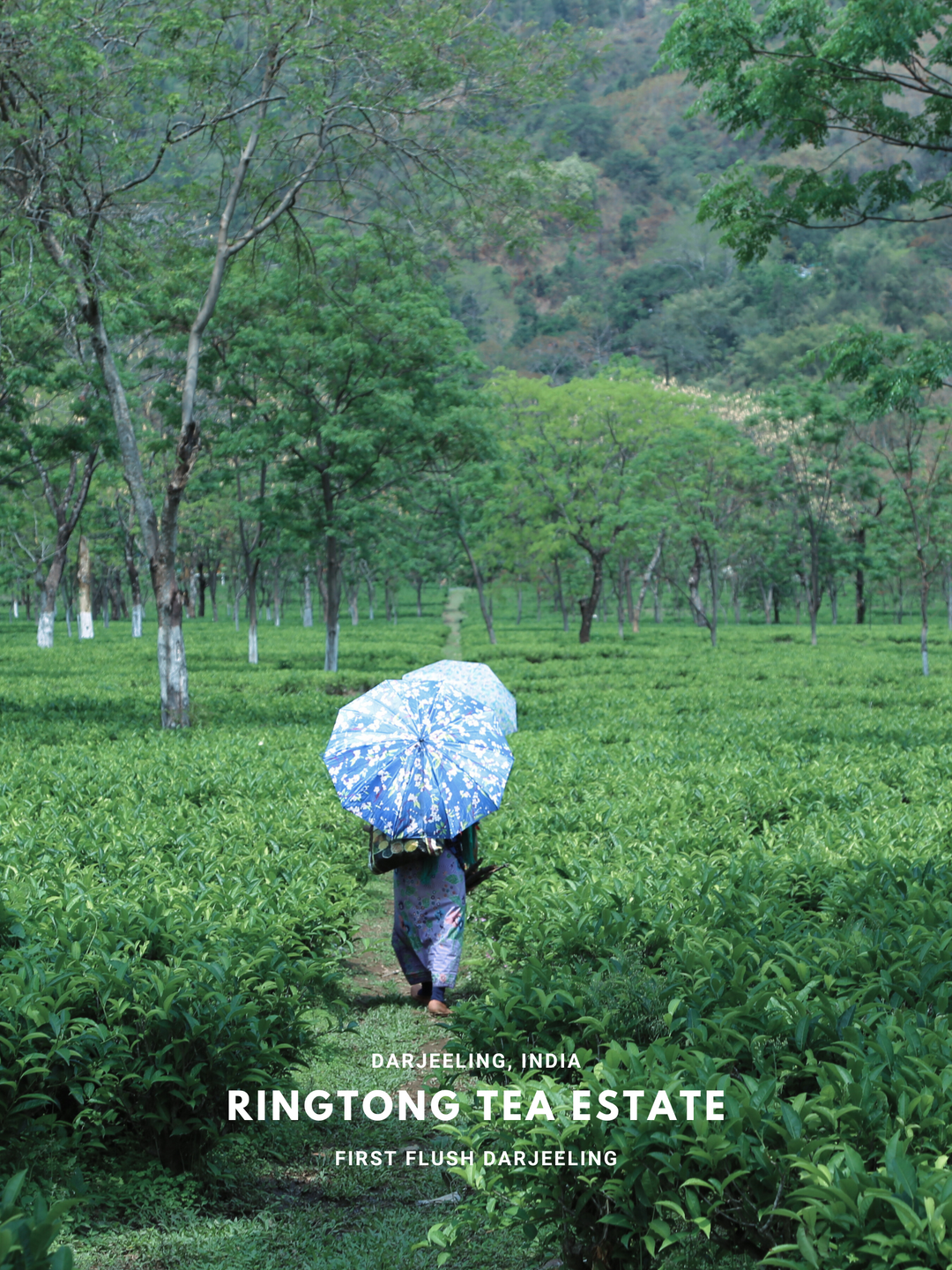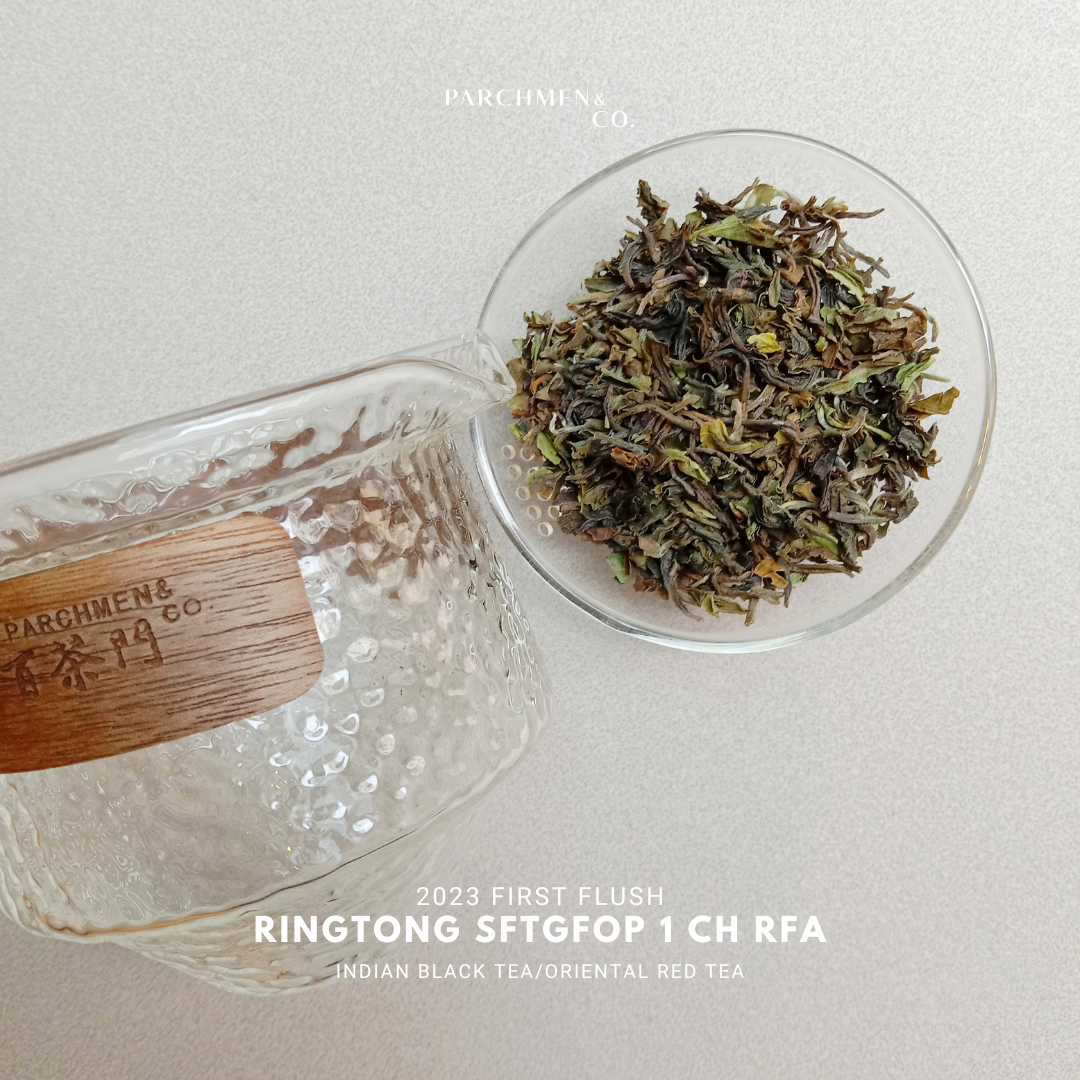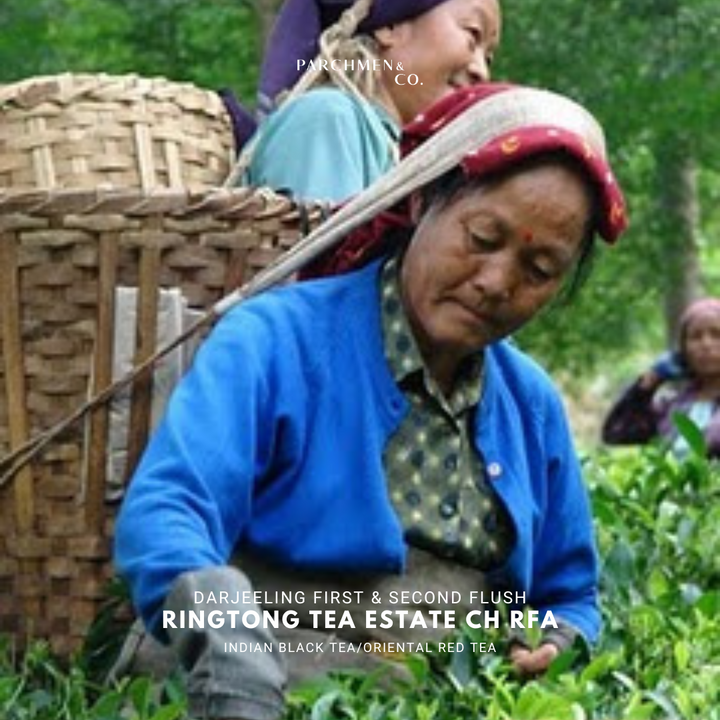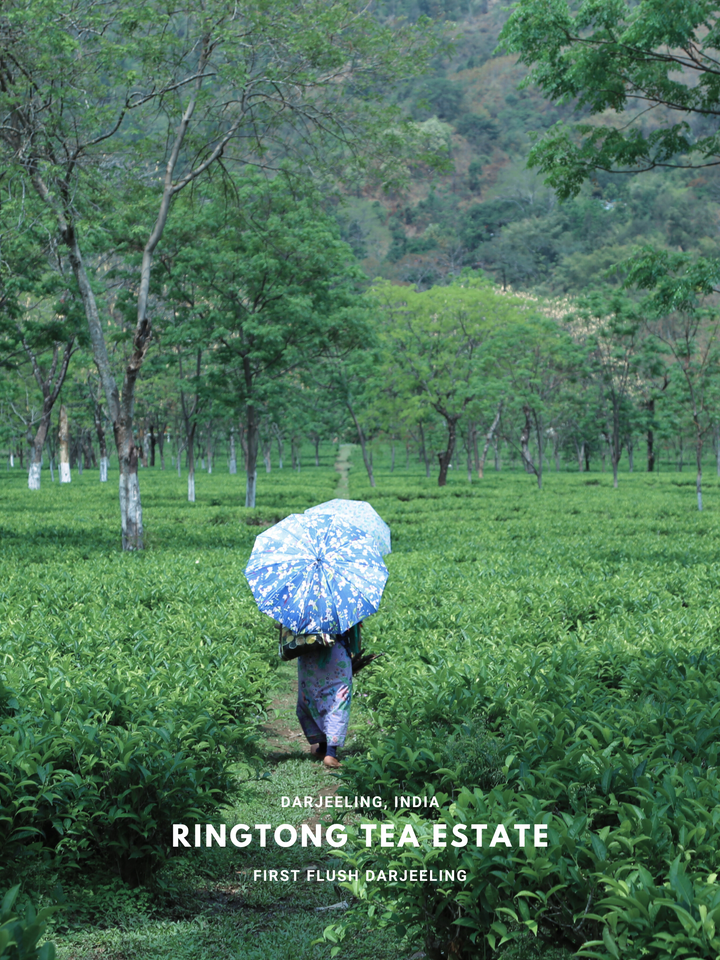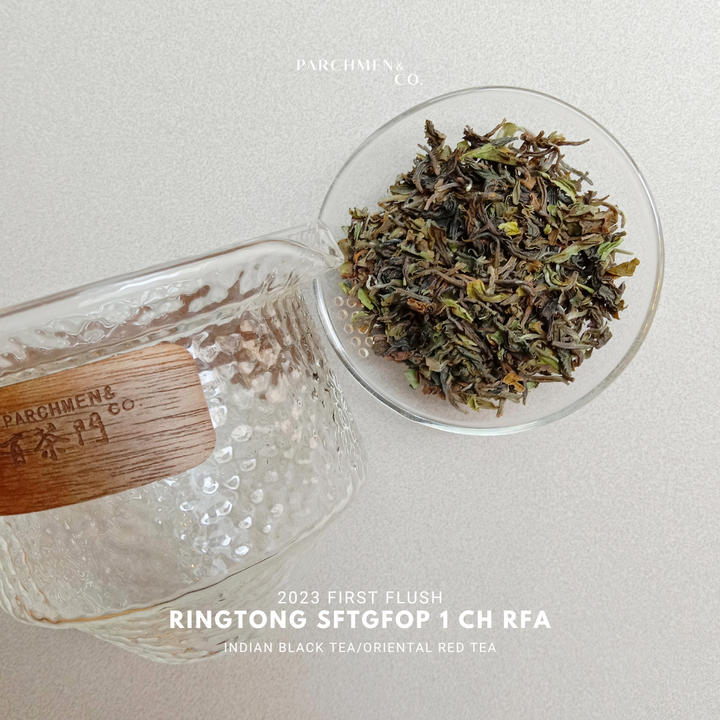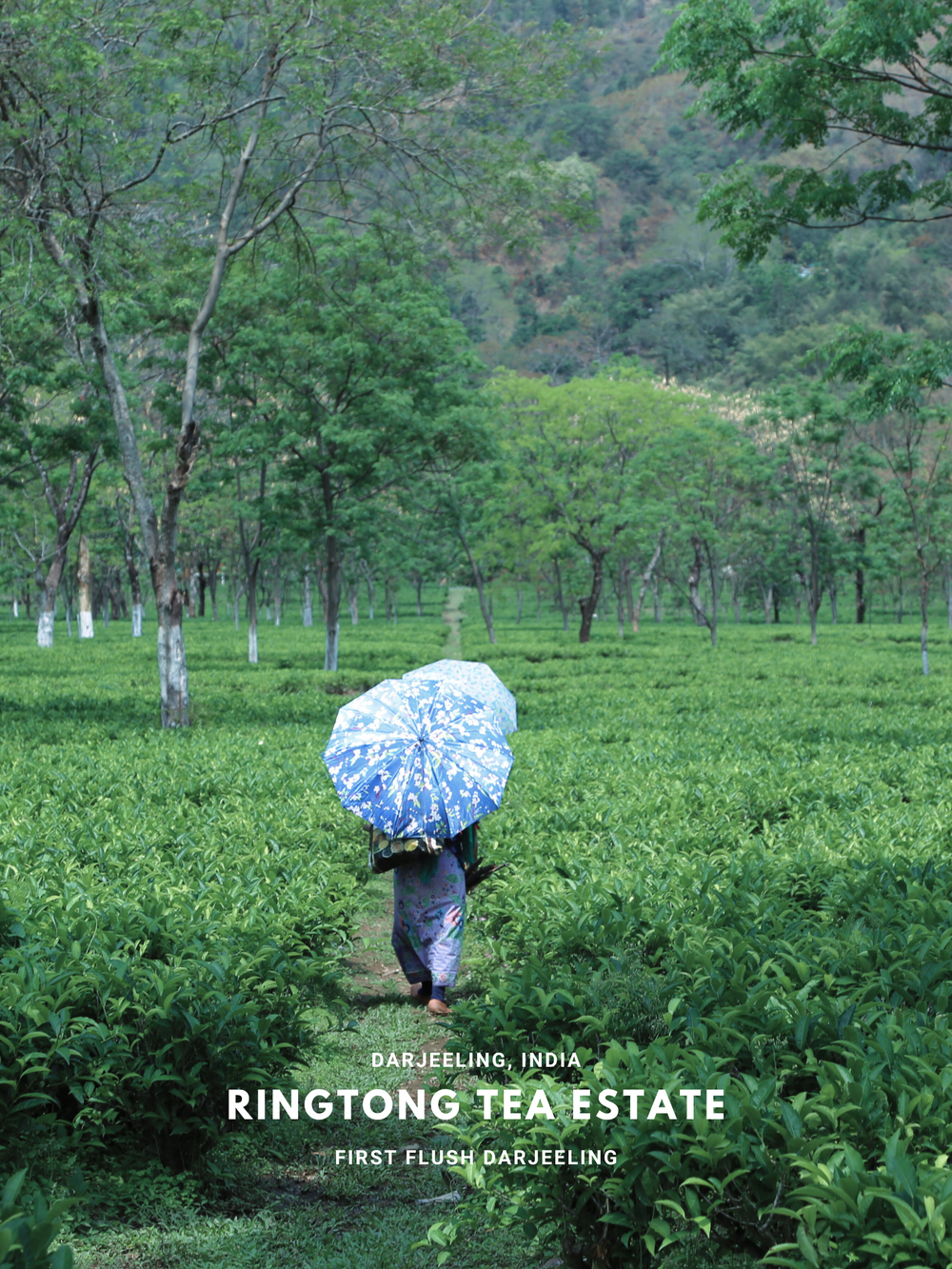Ringtong Darjeeling First and Second Flush
- In stock, ready to ship
- Backordered, shipping soon
In West Bengal in northeast India, the asphalt pathed Hill Cart Road, officially known as National Highway 110, meanders along the contours of the eastern spurs of the great Himalayas amidst natural reserves and tea gardens. Stretching north from the plains of Siligiri at the foothills around 200m right up to Darjeeling town at 2,045m, it passes by three towns, namely Kurseong at 1,500m (where Giddapahar, Goomtee, Jungpana, Margarat's Hope tea estates are located), then Sonada at 1,850m (where Ringtong Tea Estate is located), then Darjeeling at 2,045m which sits atop the hill settlements against the backdrop of the majestic Kanchenjunga, the third highest mountain in the world. Parallel to this road on its west is the Mirik Road, which passes through the town of Mirik at 1,500m (where Okayti Tea Estate is located). After the small transit town of Mane Bhanjang, Mirik Road joins with Rishi Road pointing eastwards and crosses with north-south Hill Cart Road at the small neighbourhood of Ghoom just off the main town of Darjeeling. Historical tea gardens - 90 of them as counted in 2022 - scatter unevenly along these two roads since 170 years ago, circa 1852 when the first tea gardens were officially established. Earlier dates were cited for other tea gardens when they were smaller scale, e.g. Bara Ringtong in 1830s, and now has taken the world famous name of Margarat’s Hope located at Kurseong.
Little is known about the earlier years of Ringtong Tea Estate which was established in 1865. The coincidence in the names of Ringtong at Sonada and the former name of Margarat’s Hope - Bara Ringtong - at Kurseong is also unknown. Today, Ringtong Tea Estate is certified Rainforest Alliance and has a strong following among the tea lovers and royal families of the world. The garden has the China variety of tea which were seeded from the earlier Chinese varieties smuggled out from China in 1849 and 1850 by Scottish Robert Fortune who managed to collect tea saplings from Zhejiang, Anhui and Fujian provinces by disguising his outlandish look and huge Scottish build in Qing dynasty attire complete with a pigtail.
Our tea is made using the Chinese variety, as designated by 'CH' which stands for China or chinary. How the China variety of tea became the mainstay of Darjeelling tea is intriguing. The current 'CH' stock in Darjeeling estates were seeded from earlier Chinese varieties smuggled out from China in 1849 and 1850 by Scottish Robert Fortune who managed to remain under cover and collect tea saplings from Zhejiang, Anhui and Fujian provinces - in no less unbelievable ways than in disguising his outlandish look and huge Scottish build in Qing dynasty attire complete with a pigtail. Beside smuggling teas - totalling about 10,000 stocks of saplings over the three years from their own records, Robert Fortune also smuggled out 18 tea farmers, some of whom were left behind in Sri Lanka on route to India, and the rest safely reached India and kickstarted the cultivation and processing of Chinese tea varieties in India. His years spent in the heartlands of China exposed the weak domestic situations of the Qing dynasty beyond its strong international image as a superpower. This rare insight offered by the letters sent by Robert Fortune out of China set the stage for the subsequent colonisation of China by the western powers.
In a bid to adapt tea making techniques to local conditions and equipment, the techniques of processing Indian tea evolved differently from the Chinese. In fact, even the nomenclatures are different, with the Indians calling it black teas and the Chinese revising that old name to call it a red tea.
In the Indian technique of making spring tea, the first flush fresh leaves are picked 1 bud 2 leaves, in a short picking season of about 4 weeks. They are left overnight to whither in the tea factory, where they are turned several times to allow even drying and to prevent heat accumulation from the accompanying natural reactions from withering. In the morning, the leaves are rolled and given their final shapes before an extremely short 5 to 10 mins of oxidation. Very little oxidation would take place in the leaves, given its tenderness and short period of growth. They are then dried in a mechanical dryer and packed for the market. Such a technique produces a tea of varying tones of colour - mix of green lightly oxidised smaller leaves and silver furry buds to heavily oxidised red and brown larger leaves. Its flavour reflects this spectrum of colours - fresh, light and bright like a green tea and yet with the aromas and sweetness of ripe fruits that come with heavier oxidation.
The second flush aims to make a bolder and richer tea, made possible by the leaves that develop faster under the summer sun. The leaves are picked 1 bud 3 leaves, in a longer picking season of 4 - 5 weeks, with picking very 7 - 10 days. In the second flush, the processing style merges with the traditional Chinese style of red tea processing, allowing the leaves to oxidise heavily before sending them to the dryer. The result is a tea of darker shade, with occasional silver buds of low oxidation (by virtue of the lesser catechins in a young bud).
First and second flush teas of the highest grade usually come with a string of designations. SFTGFOP 1 means Super Finest Tippy Golden Flowery Orange Pekeo Grade 1. Essentially, it means the highest grade. Peculiar to each estate, the highest grade is a designation adopted since their respective inception, and thus, they do not differ in quality although the grade may look different. In other words, one estate may designate SFTGFOP 1 as their highest grade, while another equally reputable estate may designate FTGFOP as their highest grade.
Brew Flavour
We are brewing both flushes in our Parchmen Glass Gaiwan, at 3g to 120ml of 85°C water for 45 sec.
For the first flush, the brew colour is golden yellow. The brewed leaves smell of stewed fruits, with floral notes piercing through when the leaves cools, accompanied by a hint of nutmeg and pepper. The brew is chewy and juicy, full of white and yellow florals - think jasmine, marigold - on a soft buttery background, with black grapes occasionally revealing themselves. Mouthfeel is thick and smooth. As it cools, it becomes more sparkling, creamy and grapey. This tea can be brewed twice, with a perceived thinning of the brew the longer it is brewed.
For the second flush, the brew colour is amber. The brewed leaves are woody, followed by a perfumy sweet grapey and floral note, turning to notes of grapes and red dates as the leaves cool. The brew is sweet, thick and juicy, with clear honey and grapes, with hints of red dates and longan. The notes of black grapes in the first flush becomes more pronounced in the second flush, from hot to cold. The floral notes in the first flush have transformed to become a fruity note, and the spicy notes have disappeared. We are brewing this tea twice, with slight but nice astringency in the second brew.
Come onboard with us to travel and savour our world in a cup!




